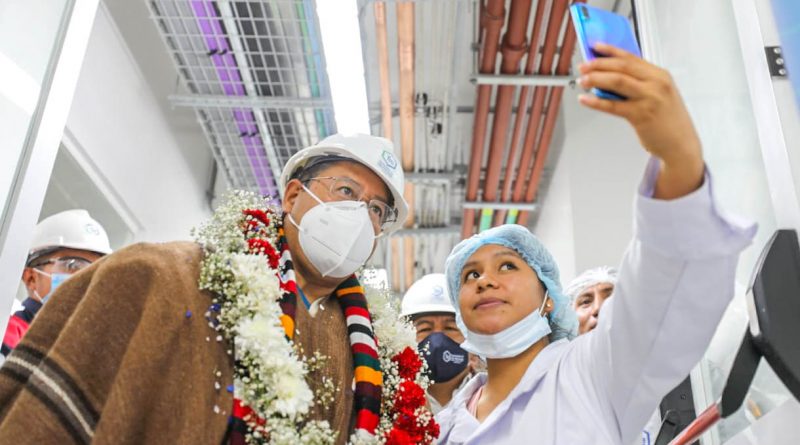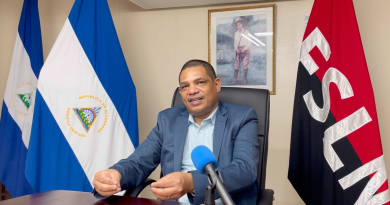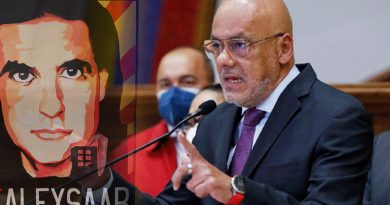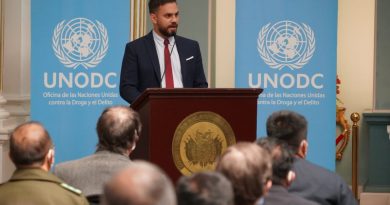How Bolivia’s Economy Was Saved: Interview
We spoke to Zenón Mamani, Bolivia’s Vice Minister for Budget and Public Accounts, about what the country’s economic recovery looks like following the restoration of the socialist model at the end of 2020, with the landslide victory of Luis Arce and the Movement Towards Socialism.
What are the core principles behind the economic reconstruction of Bolivia following the defeat of the coup?
In 2020 the Bolivian economy was in crisis due to disastrous management at the time, our proposal as the economic team of Luis Arce, was to kick-start economic growth through public investment and penciled in more $4 Billion of investments during 2021. We’ve also focused on boosting internal demand and delivered on campaign promises such as an anti-hunger welfare payment at the beginning of Luis Arce’s term. We then proceeded to guarantee access to cheap credit for people looking to buy or build their homes, as well as for small businesses. We’ve invested $1.5 Billion in projects aimed at substituting imports with national production. We launched a new fund of Bs 2 Billion to restart the infrastructure projects that were scrapped by the coup. We raised the minimum wage, this is important because under the coup it was the only year since 2006 that there was no raise. Furthermore, we created 1,700 new jobs in education, 2,500 new jobs in public health. This is all part of an economic package that has boosted growth and helped us reach a rise of nearly 6% in GDP during 2021. This has caused unemployment to fall, in July 2020 (under the coup) unemployment was at 11.6%, we’ve reduced that to 5.2% as of October 2021, which translates to 1.2 million new jobs.
Our Anti-Covid measures have also played a key role, our government has provided all the tests, vaccines, and medications necessary to fight the pandemic and this has allowed us to maintain a sustained level of economic growth and activity. We’ll keep this up in 2022 and our forecasts indicate a growth of 5.1% in GDP, we can reach that if we maintain our policy of economic reconstruction of the productive sector, to that end we’ve penciled in a 25% rise in public investment in that supply side of the economy. Investment in health will go up to 10% of the total national budget, investment in education will go up to 10.8%. Balancing the books is also important for us in 2022. Under the coup, the public deficit went up to 12.7% of GDP which was the largest we’ve seen for many years. Under Luis Arce we’ve reduced that deficit to 9.7%, and we hope to reduce that further to 8% this year.
Inflation is a big problem in the hemisphere. Brazil has reached a record high of 10%, the rest of our neighbors have similarly high levels. However, Bolivia closed the year with less than 1% inflation. How was that achieved?
Controlling inflation is one of our key tasks, and we’ve delivered on that. Bolivia ended 2021 with an annual inflation rate of 0.9%, which is the lowest in the region. The key factor driving this is our public investment in agriculture, particularly in the production of wheat, corn, and potato. This investment has boosted productivity in the agricultural sector and thereby prevented supply chain disruptions on basic foodstuffs. Our policy of currency controls has also helped maintain the value of the boliviano (Bs.). These two measures are key features of our economic model.
Is there a concern that a rise in public spending could lead to overheating? How can that be prevented when drawing up the national budget?
I don’t think there’s a risk of overheating. When we draw up the national budget, the most important element is analyzing the national and international economy and then making forecasts about what’s in store for us this upcoming year. There are lots of indicators that are very promising for us going forward. Tax revenues rose 14% during 2021, which tells us that there is a sustained rise in economic activity that isn’t going to go away.
Drawing up the national budget is a complex affair. It involves more than 500 institutions; the ministries, governors, local authorities, most important of all is the participation of the state companies. Before Evo Morales, the small number of state companies that existed were only there to administer contracts, the companies themselves didn’t generate any income for the country. After Evo Morales was elected in 2005, with Luis Arce as his economy minister, they turned the state sector into an active part of the economy and boosted state companies that had the potential to generate profit and create jobs. Before 2005, incomes from the state companies constituted just 4% of national revenue. Today, they contribute 31% of the government’s income. It’s very important that our state companies play a role in drawing up the national budget because they are the ones that provide much of the funds.
It’s important to remember that Bolivia’s state companies do not run as subsidized entities. They are self-sufficient, and they generate profits that then go to the state. This efficiency is a key principle for us in the state sector. Supporting the growth of the state sector is key for growing the productive capital in the economy. If we continue on this path, we can reduce the historic inequality in our country. We began to reduce it in 2006, and now we are back on track with that task.
The victory of the left in almost all our neighbouring countries, as well the rise of China, surely presents a lot of good opportunities for the Bolivian economy in 2022.
Yes, without a doubt this is a positive picture for us, but I don’t think we should become too reliant on these external factors. Our most important task is to boost internal demand, strengthen productive capital and human capital within the national economy, these are the factors that will sustain growth.
Bolivia has a long-held policy of Import-Substitution so that changes in the international economy don’t adversely affect us. We can see that this has been successful; In 2008-9, during the global financial crisis, we emerged as the fastest growing economy in the region. Then again, when the prices of oil, gas, and our other export commodities collapsed in 2013-2014, it didn’t affect us very much, even though the price of oil collapsed from over $100 dollars a barrel to like $30. We had a wider productive apparatus and strong internal demand, and this kept the economy going during that crisis, in which other countries in the region did suffer badly. We have to continue defending national production. We have to maintain that positive trade balance that we achieved in 2021. This is our model that we built over the years, and which we’ve relaunched under the leadership of Luis Arce.



